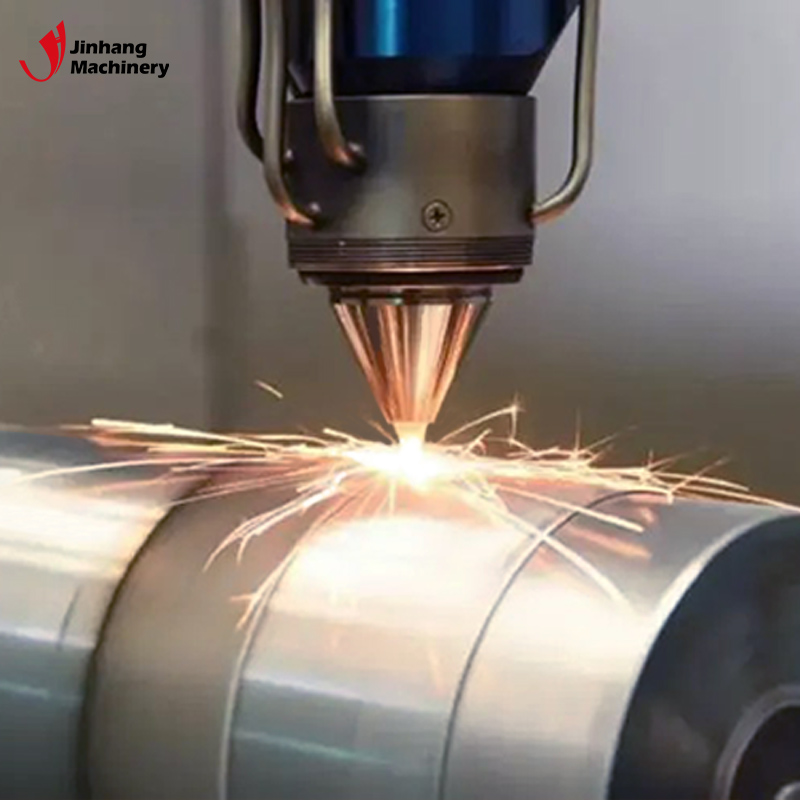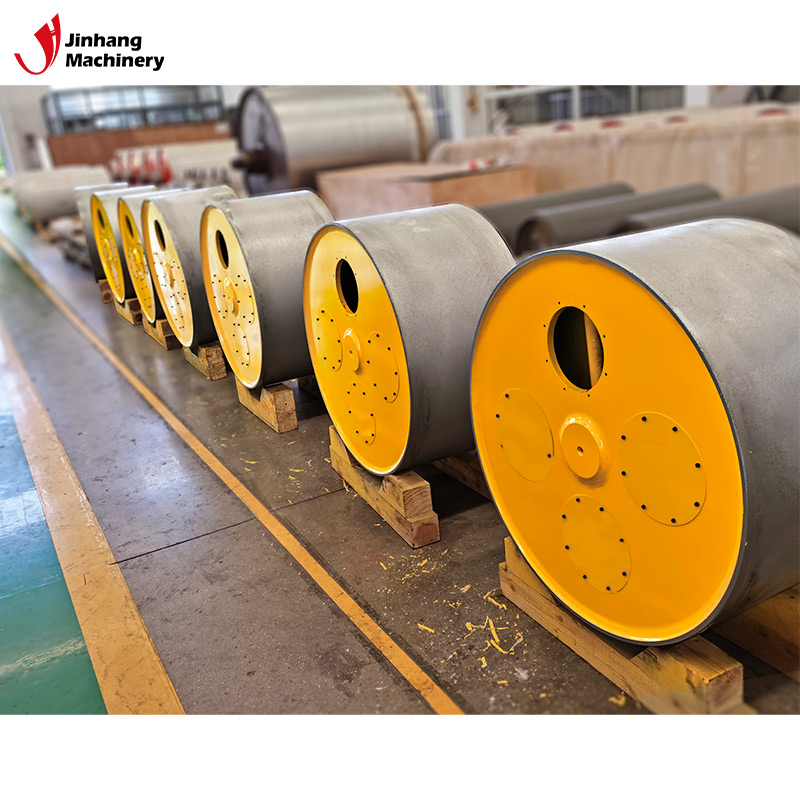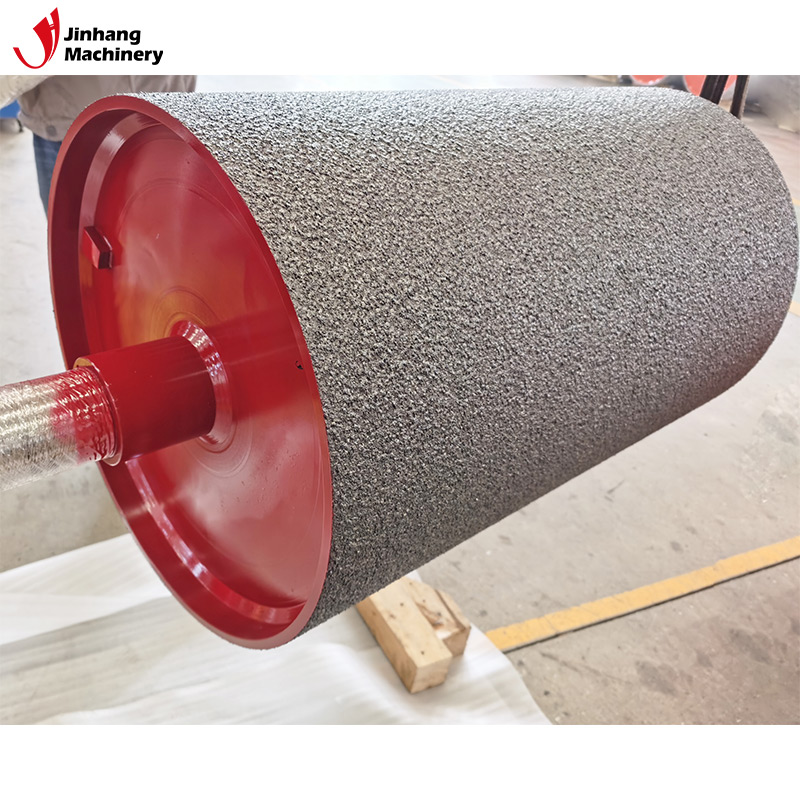What are anilox rollers usually made of?
In modern industrial production, anilox rollers are a common and important device used to control the coating and transfer of liquids, especially in industries such as printing, coating, coatings and packaging. The surface of anilox rollers is precisely designed and usually consists of multiple small holes or grid-like structures that can store and transfer liquids to ensure uniform distribution and precise control of liquids in the production process.
However, the material of anilox rollers is one of the key factors that determine their performance and life. In order to meet the needs of different industrial applications, the materials of anilox rollers usually need to have high strength, wear resistance, corrosion resistance and other characteristics.
This article will discuss in detail several commonly used manufacturing materials for anilox rollers, including metals, ceramics and other composite materials, and analyze the advantages and disadvantages of each material in different industrial applications.

What are anilox rollers usually made of?
Main material types of anilox roller:
1. Metal material
● Aluminum alloy
● Stainless steel
2. Ceramic material
● Aluminum oxide ceramic
● Chromium oxide ceramic
3. Polymer material
● Polyurethane
● Teflon coating

Anilox roller: Metal material
Aluminum alloy
Aluminum alloy is one of the common base materials of anilox roller, especially in light industry and low-load applications. The main advantages of aluminum alloy are its light weight, easy processing and relatively low cost. For processes that do not need to withstand excessive pressure, such as certain types of flexographic printing, aluminum alloy is a good choice.
Advantages of aluminum alloy:
● Light weight, easy to operate and install;
● Low cost, suitable for low-end and mid-range applications;
● Excellent processing performance, capable of manufacturing complex reticulated structures.
Disadvantages of aluminum alloy:
● Poor wear resistance, easy to wear due to long-term use;
● Not as corrosion-resistant as other high-end materials, and may require additional coating or surface treatment.

Anilox roller: stainless steel
Stainless steel is stronger and more durable than aluminum alloys, so it is more common in heavy industry. Stainless steel anilox rollers have good oxidation resistance and corrosion resistance, making them particularly suitable for handling corrosive liquids or working in high-temperature environments. Compared with aluminum alloys, stainless steel is also more wear-resistant, so it performs particularly well in processes that require frequent use and high precision.
Advantages of stainless steel:
● Excellent corrosion resistance, suitable for handling corrosive liquids;
● High mechanical strength, able to withstand high-load operations;
● Good wear resistance and long service life.
Disadvantages of stainless steel:
● High density and heavy weight, which may be laborious to operate and install;
● High cost, suitable for high-end applications.
Anilox roller: ceramic material
Alumina ceramic
Alumina ceramic is one of the most common ceramic anilox roller materials, and it is known for its extremely high hardness and wear resistance. Ceramic anilox rollers are usually processed with ceramic coatings on the basis of metal roller cores to improve the durability and corrosion resistance of their surfaces. Alumina ceramics have very excellent physical properties and can be used for a long time in high temperature, high pressure and high wear environments. Its surface can be laser engraved or otherwise formed into a precise mesh structure to ensure accurate transfer of liquids.
Advantages of alumina ceramics:
● Extremely high hardness and wear resistance, able to maintain surface structure for a long time;
● Excellent corrosion resistance and chemical resistance, suitable for the chemical industry;
● Good thermal stability, able to maintain performance in high temperature environments.
Disadvantages of alumina ceramics:
● Brittle, may break or crack when subjected to strong impact;
● High cost and high processing complexity.
Anilox roller: chromium oxide ceramics
Chromium oxide ceramics are a more wear-resistant and corrosion-resistant material, which is superior to alumina ceramics in certain specific environments. Because the chromium oxide surface has extremely strong chemical corrosion resistance, it is often used in production lines that need to handle strong acids, strong alkalis or other corrosive substances. In addition, the dark green color of chromium oxide ceramics also helps with visual identification and surface inspection.
Advantages of chromium oxide ceramics:
● Excellent chemical corrosion resistance, especially suitable for handling highly corrosive liquids;
● High surface finish, suitable for precision liquid transfer and coating processes;
● High wear resistance, suitable for long-term, high-intensity use.
Disadvantages of chromium oxide ceramics:
● High brittleness, easily damaged by mechanical impact;
● High cost, suitable for high-end industrial applications.
Anilox roller: polymer material
Polyurethane
Polyurethane material is one of the common elastic materials in industrial production, with good wear resistance and oil resistance. Polyurethane anilox roller is usually used in medium and low pressure applications. Its flexibility makes it suitable for some applications that require elasticity and impact resistance, such as packaging and certain printing processes.
Advantages of polyurethane:
● Good wear resistance and elasticity, able to withstand medium loads;
● Low cost, suitable for a wide range of applications;
● Good oil resistance and chemical resistance, suitable for handling oily liquids.
Disadvantages of polyurethane:
● Affected by temperature, may lose elasticity in high temperature environments;
● Hardness and durability are not as good as ceramic or metal materials.
Teflon coating
Teflon (PTFE) is a high-performance polymer material with excellent anti-stick and chemical corrosion resistance. It is usually used as the surface coating of anilox rollers in applications where materials need to be prevented from adhering to the roller surface. Teflon coating has a very low coefficient of friction and can effectively reduce the retention of liquid on the roller surface.
Advantages of Teflon coating:
● Very low coefficient of friction, reducing material adhesion;
● Excellent chemical resistance and strong corrosion resistance;
● Suitable for precision coating and anti-stick applications.
Disadvantages of Teflon coating:
● Poor wear resistance and easy to wear in high wear environments;
● High cost, suitable for specific applications.

How to choose the material of anilox roller?
The material selection of anilox roller should be determined according to the specific application requirements. The following are some key factors to consider when selecting the material of anilox roller:
Working environment
The working environment of anilox roller is an important reference factor for selecting materials. If the anilox roller needs to handle highly corrosive or high temperature liquids, highly chemically and temperature resistant ceramic materials (such as aluminum oxide or chromium oxide ceramics) will be the ideal choice. When handling liquids with medium temperatures and pressures, stainless steel or polyurethane rollers can meet the needs.
Liquid Type
Different liquids have different requirements for anilox roller materials. For example, oily or corrosive liquids require the use of oil-resistant and corrosion-resistant materials such as polyurethane or Teflon coatings. Water-based liquids have relatively low material requirements, and aluminum alloy or stainless steel anilox rollers can do the job.
Frequency of use and life
If the production process requires frequent use of anilox rollers and requires a long life of the equipment, it is particularly important to choose a highly wear-resistant ceramic material. The high hardness and wear resistance of ceramic materials ensure that they can be used for a long time without surface wear or damage, thereby reducing maintenance costs and downtime.
Economical
Although ceramic and stainless steel anilox rollers excel in durability and performance, they are more expensive. If the enterprise has high requirements for cost control, it can choose aluminum alloy or polyurethane rollers, especially in occasions where high strength, corrosion resistance and other characteristics are not required.
How to maintain and maintain anilox roller materials?
Anilox rollers of different materials need to be maintained and maintained according to the material characteristics during use. Ceramic anilox rollers need to avoid mechanical impact to prevent cracks on the surface. In addition, clean the surface regularly to ensure that the reticulated structure is not blocked by residues, which will affect the accuracy of liquid transfer. Stainless steel anilox rollers have good corrosion resistance, but when handling strong acid or strong alkali liquids, they still need to be cleaned and inspected regularly to prevent surface oxidation or corrosion. Aluminum alloy anilox rollers have poor wear resistance, so high-intensity friction and pressure should be avoided during use.
Durable and Reliable Rolls for Your Business – JH Machinery
JH Machinery is the ideal supplier for durable and high-performance rolls. Whether you require custom-designed heating rolls, polyurethane rolls, or tungsten carbide-coated rolls, we manufacture each one to the highest standards. Our factory in Foshan, China, uses the latest technology to deliver precise and long-lasting products for industries such as mining, packaging, and automotive testing. Reach out for pricing details, customized solutions, and to inquire about discounts or promotions.
